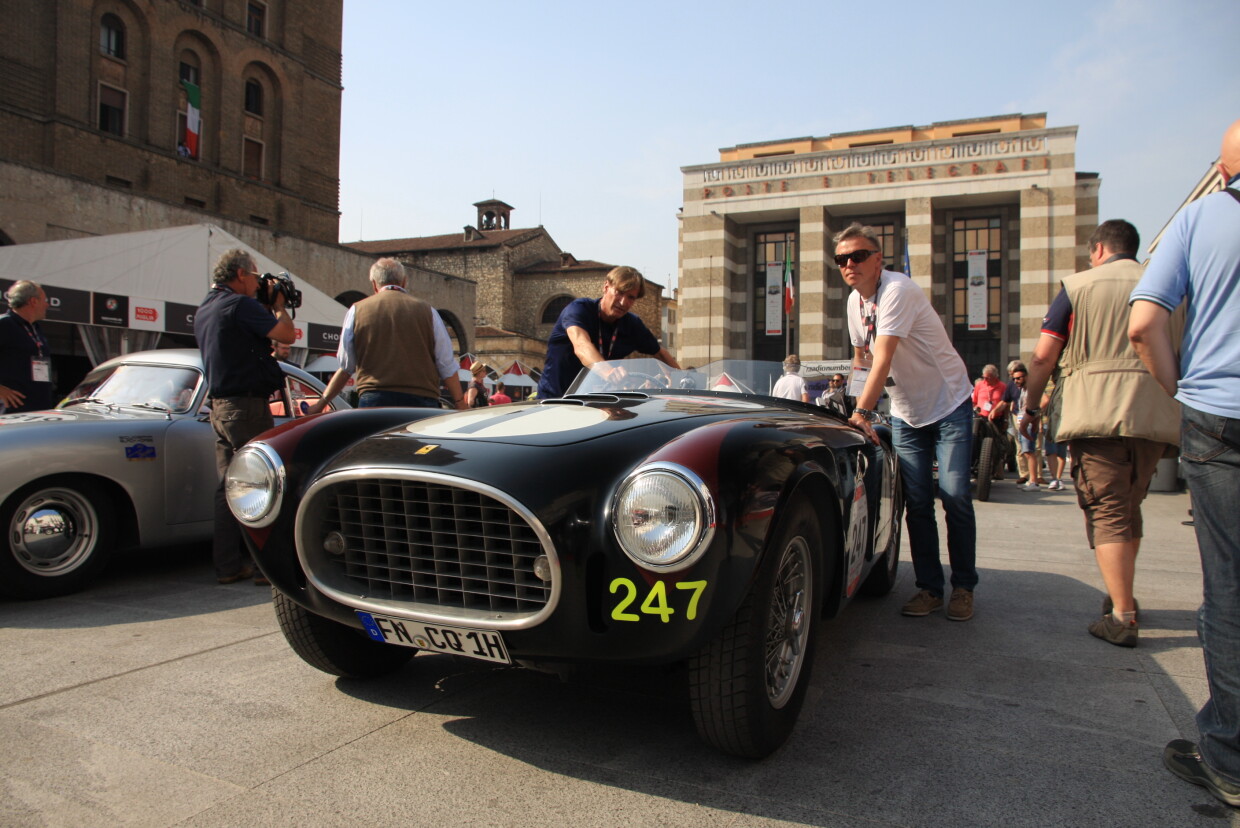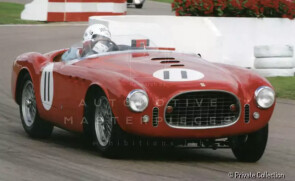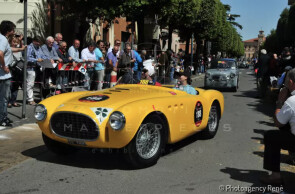
1952 Ferrari 225 S
ON/OFF
Why am I an Automotive Masterpiece?
The Ferrari 225 S was a sports racing car produced in 1952, evolving from the earlier Ferrari 212 Export with significant engine upgrades that enhanced power output. This model was extensively used in competition and achieved numerous international victories. Notable successes include the 1952 Monaco Grand Prix for sports cars, Portuguese Grand Prix, Coppa d'Oro di Sicilia, Coppa della Toscana, Coppa d'Oro delle Dolomiti, among others. It represented the final iteration of the Colombo V12 engine before the introduction of the 3.0-litres 250-family engine. The 1952 Ferrari 225 S continued the development of the 212 Export sports car, sharing many features with its predecessor but with critical enhancements. In total, 21 cars were produced, all featuring right-hand drive, as was typical for racing cars at the time. Some units were conversions from the 212 Export range, and some even originated from the 166 MM. Twenty out of twenty-one were bodied by Vignale to Giovanni Michelotti’s designs: fourteen open Spyders, and six closed Berlinettas. A single Touring Barchetta was also produced. As Ferrari gradually shifted focus away from Carrozzeria Touring to other coachbuilders, Vignale remained in favor but was soon to be supplanted by Pinin Farina and Scaglietti. While the chassis, wheelbase, and track measurements of 225 S remained unchanged compared to the 212 Export, the V12 engine saw an increase in total displacement due to a larger bore, substantially boosting power output thanks to Aurelio Lampredi’s technical innovations. These enhancements included a new, more efficient intake manifold and an improved distribution system, which would be carried forward to the next generation of Colombo V12-engined cars introduced in the same year. The 225 S’s Colombo V12 engine, derived from the Ferrari 212 but with cylinders bored out an additional 2 mm from the older 2.6-litre engine, now measured 70 by 58.8 mm in bore and stroke, culminating in a total capacity of 2,715.46 cc. Lampredi’s redesigned intake manifold and distribution boosted power from 165 hp to 210 hp at 7200 rpm, with a compression ratio of 8.5:1. The engine featured a single overhead camshaft per cylinder bank, actuating two valves, fueled by three Weber 36DCF carburettors and powered by a single spark plug per cylinder served by two ignition coils. It employed a single-plate clutch and wet sump lubrication. The front suspension consisted of an independent setup with double wishbones, a transverse leaf spring, and hydraulic shock absorbers, while the rear used a live axle with twin semi-elliptical springs and hydraulic shock absorbers. This differed from the 212 Export, which used Houdaille-type shock absorbers and single springs at the rear. Hydraulic drum brakes were fitted on all wheels, and the gearbox was a five-speed, non-synchronised type. Most of these cars utilized the well-proven tubular steel spaceframe chassis, identified by an "ED" or "EL" serial number suffix. Alternatively, the 225 S could be built on the innovative "Tuboscocca" chassis, marked with an "ET" suffix. The Ferrari 225 S was mounted on two types of chassis designs. Most utilized the well-proven spaceframe chassis made of elliptical-section steel tubes, identified by an "ED" or "EL" serial number suffix. Alternatively, the 225 S could be built on the innovative tubular semi-monocoque chassis called “Tuboscocca”, marked with an "ET" suffix. Both chassis types had previously been used on other sports cars and maintained a wheelbase of 2,250 mm. The Tuboscocca chassis, designed and realized by Gilberto Colombo's Gilco, chassis specialist company, was exclusively for racing cars. "Tubo-scocca" in Italian translates to "tube-body." A select few examples received a smaller diameter tubular trellis-frame with additional truss-type cross-braces. This new chassis was slightly lighter than the original tubular steel chassis and offered increased rigidity and strength. This design debuted on a 1951 Ferrari 212 Inter Touring Berlinetta, sn 0141ET, which was competed in by "Pagnibon" (Pierre Boncompagni) and later offered for the 212 Export and 225 S ranges. It is believed that in total, eight 225 S were mounted on the Tuboscocca chassis: six Vignale Spyders and two Berlinettas. According to Gilco, only fifteen such chassis were built initially for the 212 Export range. The 225 S debuted at the Giro di Sicilia in 1952 with car number 443, driven by Piero Taruffi and Mario Vandelli. The model dominated the race, but a broken cylinder head gasket ultimately compromised its success. It also participated in the Mille Miglia and the Targa Florio. One of the most notable achievements for the model was at the 1952 Monaco Grand Prix, where three 225 S cars finished in the top three. However, it was outperformed at that year's Mille Miglia, where seven 225 S cars were overshadowed by the more powerful 340 MM and the sole 250 S in the race. Another significant presence of the 225 S was at the 1955 Cuban Grand Prix, driven by renowned drivers such as Piero Taruffi, Giannino Marzotto, Luigi Villoresi, Eugenio Castellotti, and Pierre Pagnibon.
Chassis no. 0198ET is a spider bodied by Vignale and designed by Giovanni Michelotti. From its chassis “ET” number we can say it has a “tuboscocca” chassis by Gilco. It’s one of 14 Vignale spiders on the total of 21 Ferrari 225S. This most attractive high performance, open cockpit Ferrari Sport Spider completed its initial factory road test in the Appenine foothills around Maranello on 28th May 1952, before being shipped to its first owner, the Portuguese Ferrari agent Joao A. Gaspar of Oporto. He had the car registered on Portuguese license plates “GD-18-48” and sold it to his fellow countryman and motor sports enthusiast Vasco Sameiro, of Lisbon. The Ferrari was painted yellow and on 22nd June 1952, it made its motor racing debut – driven by Vasco Sameiro in the Portuguese Grand Prix for sports cars, run around the streets of Oporto. The car had an intense racing life in the years 1952 and 1953. It then had a second sporting youth with races for historic cars in recent years, participating in various editions of the Mille Miglia re-enactment.





